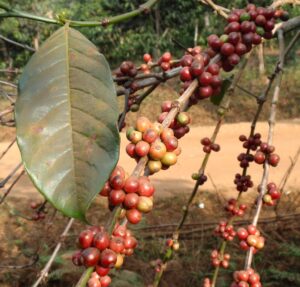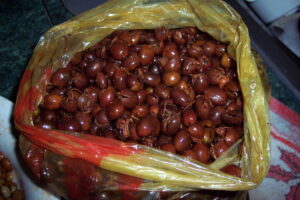Did you know the coffee bean is actually the seed of a fruit? That's right, that roasted and ground coffee "bean" comes from the cherry of a coffea plant species (not to be confused with the cherry tree which is part of the prunus species that we are traditionally accustomed to). Let's find out more about the coffea variety of plant, and how it ends up being a delicious cup of coffee after processing.

"Coffee Tree" by John Pavelka is marked with CC BY 2.0.
Once people find out it is a fruit, many questions usually follow, such as how is the coffee cherry transformed into a beautiful cup of coffee? Can you eat a coffee cherry? What does it taste like? And is there anything we can do with the by-product of coffee production?
How is Coffee Processed from Seed to Cup?
We talk about the different varieties of coffee and how the different way to process them affects the taste in our how to choose coffee guide, but apart from the differences in the varieties, the process is similar.
Then it's ready for drinking, that's the whole journey from seed to cup.
Can you eat a coffee cherry?
The greatest growers will be able to tell you that they can tell how the coffee will taste just by tasting the coffee cherry, but it's not the most marketable fruit (compared to the delicious end result of the coffee bean). It has a soft delicate flavour that has hints of jasmine and the light acidity of citrus fruit, but the texture itself is slimy and doesn't transport well because it starts the fermentation process quickly hence why you can't go to your local shops and find coffee cherries in the fruit section.
But there are ways you can taste the coffee cherry, and that's by using Cascara, it's the dried fruit of the coffee cherry.

"CASCARA DE CAFE" by Christian Frausto Bernal is marked with CC BY-SA 2.0.
What is Cascara? - And why is it banned in the UK and Europe?
Cascara means "husk", "peel" and "skin" in Spanish and is the dried fruit of the coffee plant. This gives the opportunity to growers to make additional revenue streams from the same plant and with the correct processing, Cascara can be used in a variety of ways to create great tasting teas, infused coffees, syrups, chocolates and loads more.
However, it's not allowed in the UK due to some really frustrating legislation that restricts importing "Novel Foods", novel foods are ones that haven't been regularly consumed in Europe before 1997. Therefor it needs to be evaluated by the European Commission before it can be sold as food product.
So it may be some time before we see it back in the shops, it should be legalised eventually but there is a lot of bureaucracy in the way and it's been some years since the application first went in and there's still been no official evaluation, and even when they evaluation is complete, the UK, being out of Europe, may have to conduct it's own evaluation and application for importing.
Conclusion
So there you have it, the long journey from seed to cup and what it looks like, and how it tastes, the only way you will be able to taste cascara tea or the like is by visiting the places where it is traditionally made, such as Brazil, Ethiopia or Yemen, and whilst you are there you might be lucky enough to taste a ripe coffea cherry too. If you do, let us know what you think.
